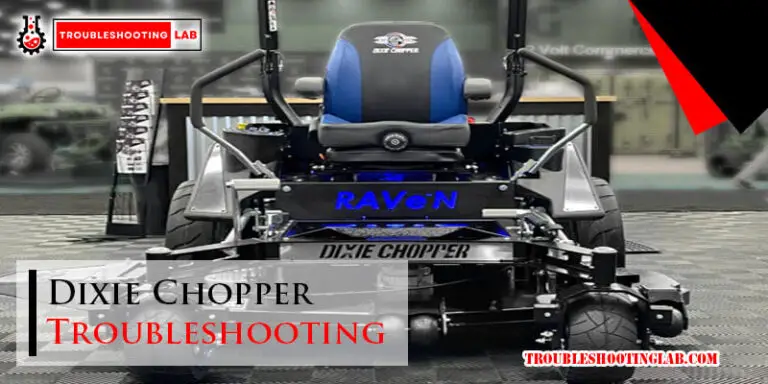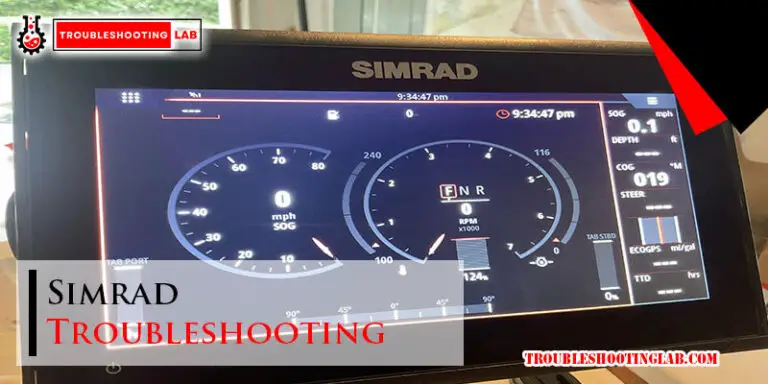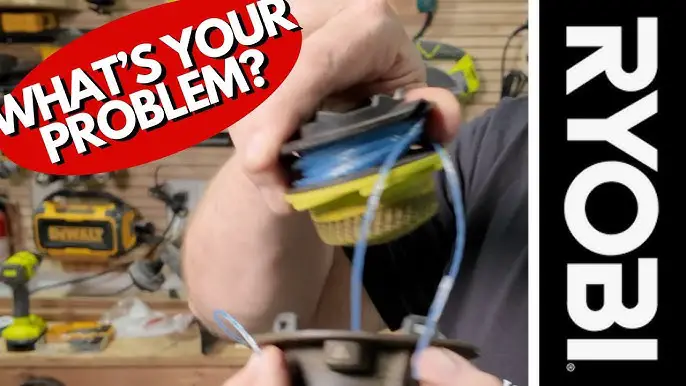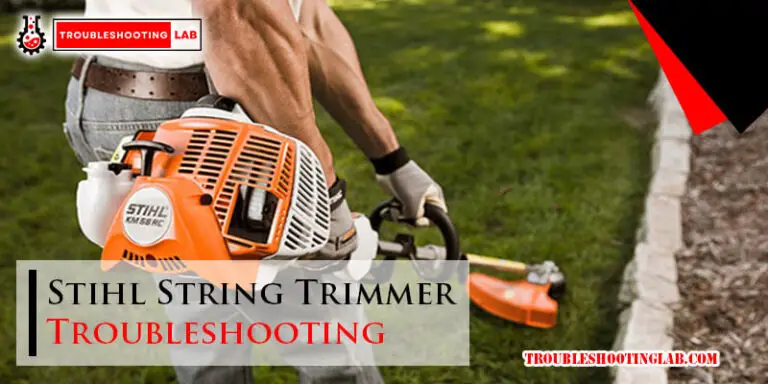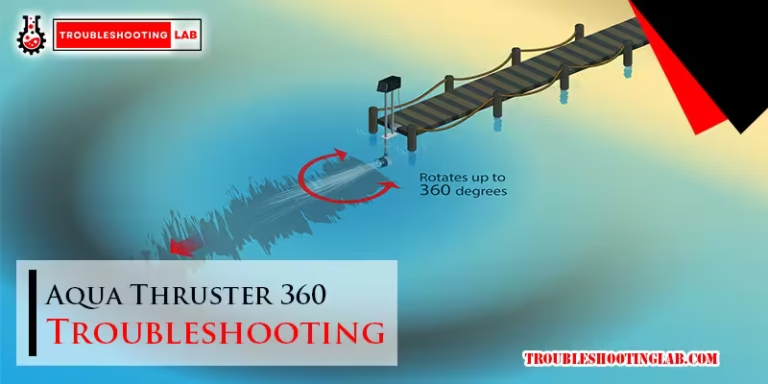Pulsating Sprinkler Troubleshooting: Fix Common Issues Fast
Pulsating sprinklers can be a gardener’s best friend when working properly. But what happens when they stop working?
Sprinklers often face issues like uneven water distribution, lack of pressure, or complete failure. These problems can be frustrating, especially during dry seasons. Understanding the common causes and how to fix them is key to maintaining a lush garden. This guide will walk you through simple troubleshooting steps.
We aim to help you diagnose and resolve common pulsating sprinkler issues. From clogged nozzles to pressure problems, we will cover it all. Save time and keep your garden green by learning how to address these common sprinkler woes. Let’s get started on ensuring your sprinkler system works efficiently.
Introduction To Pulsating Sprinklers
Pulsating sprinklers are a popular choice for watering lawns and gardens. They are known for their efficiency and reliability. Understanding how they work can help maintain a healthy and green lawn.
What Is A Pulsating Sprinkler?
A pulsating sprinkler is a type of irrigation device. It uses a rotating head to distribute water. The head moves back and forth, creating a pulsating water spray. This action covers a large area evenly.
The device connects to a garden hose. Water pressure moves the head, which distributes water in a circular pattern. Pulsating sprinklers are adjustable. Users can change the spray radius and pattern to suit their needs.
Benefits Of Using Pulsating Sprinklers
Pulsating sprinklers offer several advantages:
- Efficient Water Use: They use water more efficiently than other types. They deliver water directly to the roots, reducing waste.
- Wide Coverage: They cover a large area. This makes them ideal for big lawns and gardens.
- Adjustable Settings: Users can adjust the spray pattern and range. This flexibility allows for customized watering.
- Durability: They are built to last. Many models are made from durable materials like metal or high-grade plastic.
Overall, pulsating sprinklers are a great option for those who want efficient and effective lawn care.
Common Issues With Pulsating Sprinklers
Pulsating sprinklers are popular for their efficient watering. But they can have issues. Here, we discuss common problems and solutions.
Low Water Pressure
Low water pressure can affect your sprinkler’s performance. It might cause weak or uneven spray. Check for blockages in the hose or sprinkler head.
- Inspect the hose for kinks or bends.
- Clean the sprinkler head to remove debris.
- Ensure the water source is fully open.
If the pressure is still low, there might be a larger issue with your water supply.
Uneven Water Distribution
Uneven water distribution can cause dry spots in your lawn. This often happens due to clogged nozzles or incorrect settings.
| Problem | Solution |
|---|---|
| Clogged Nozzles | Clean or replace the nozzles. |
| Incorrect Settings | Adjust the sprinkler’s radius and arc. |
Regular maintenance can prevent these issues. Clean the sprinkler system frequently.
Diagnosing Water Pressure Problems
Diagnosing water pressure problems in a pulsating sprinkler can be tricky. Water pressure issues can stem from various sources. Identifying the correct cause is crucial for effective troubleshooting. Let’s dive into some key areas to examine.
Checking Water Source
Start by checking your water source. Ensure the main valve is fully open. This allows maximum water flow. Verify the water pressure at the source. You can use a pressure gauge for this. Ideal pressure for sprinklers is between 30-50 psi. If the pressure is too low, it could be the main issue. High pressure can also cause malfunction. Adjust the pressure accordingly.
Inspecting Hose And Connections
Inspect the hose and connections. Look for any visible leaks or kinks. A damaged hose can reduce water flow. Ensure all connections are tight and secure. Loose connections can lead to water loss. Check the hose for blockages. Debris inside can restrict water flow. Clean out any obstructions you find. Regular inspection helps maintain proper function.

Credit: www.raypadula.com
Solving Uneven Water Distribution
Experiencing uneven water distribution in your garden can be frustrating. A pulsating sprinkler should evenly water your lawn. If not, there might be some adjustments or cleaning needed. Here, we will discuss how to solve uneven water distribution by adjusting the spray pattern and cleaning the nozzles.
Adjusting Spray Pattern
An uneven spray pattern can lead to dry spots or overwatered areas. Adjusting the spray pattern can help ensure every part of your lawn gets the right amount of water.
- Identify the dry and overwatered spots in your lawn.
- Turn off the sprinkler and locate the spray adjustment dial.
- Rotate the dial to adjust the spray arc and distance.
- Turn the sprinkler back on and observe the changes.
- Repeat the process until the water is evenly distributed.
Ensure the spray covers the entire lawn without overlapping excessively.
Cleaning Nozzles
Clogged nozzles can cause uneven water distribution. Cleaning the nozzles can restore the sprinkler’s performance.
- Turn off the water supply to the sprinkler.
- Remove the nozzle using a small wrench or pliers.
- Rinse the nozzle under running water to remove debris.
- Use a small brush or toothpick to clean the nozzle holes.
- Reattach the nozzle and turn the water supply back on.
Regularly cleaning the nozzles can prevent future clogging and ensure even water distribution.
By following these steps, you can maintain a healthy, evenly watered lawn.
Addressing Sprinkler Head Movement
The movement of a sprinkler head can significantly impact the efficiency of your irrigation system. It is crucial to ensure that the sprinkler head is stable and functions correctly. Addressing any movement issues can prevent water wastage and ensure your lawn or garden receives adequate water coverage. Below are some key steps to address sprinkler head movement.
Ensuring Proper Installation
Proper installation is the first step to a stable sprinkler head. Follow these steps:
- Turn off the water supply to the sprinkler system.
- Dig around the sprinkler head to expose the riser and connections.
- Ensure the riser is securely connected to the supply line.
- Level the ground around the sprinkler head to prevent tilting.
- Reattach the sprinkler head and ensure it is firmly in place.
Tightening Loose Parts
Loose parts can cause the sprinkler head to move. Follow these steps to tighten them:
- Inspect the sprinkler head for any loose connections.
- Use a wrench to tighten the riser if it is loose.
- Check the sprinkler head’s nozzle and cap. Tighten them if they are loose.
- Ensure the sprinkler head is seated properly in the riser.
If the sprinkler head continues to move, it may be necessary to replace worn-out parts. Regular maintenance can prevent these issues from recurring.

Credit: www.youtube.com
Dealing With Clogging Issues
Dealing with clogging issues in pulsating sprinklers can be frustrating. Over time, debris can build up and block the flow of water. This can affect the performance of your sprinkler system. Regular maintenance can help prevent these problems. Here are steps to identify and fix clogging issues.
Identifying Debris In Sprinkler
First, check for debris in the sprinkler head. Look for dirt, grass, or other small particles. These can easily block the water flow. Turn off the water supply before inspecting. Use a flashlight to get a better look inside the sprinkler. If you see any debris, it’s time to clean it out.
Removing And Cleaning Components
Next, remove the sprinkler head. Use a wrench or pliers if needed. Be gentle to avoid damage. Once removed, soak the head in a bowl of warm water. This helps to loosen any stuck debris. Use a small brush to scrub away any remaining particles. Rinse the head thoroughly before reattaching.
Check the filter screen as well. This part can also get clogged. Remove it and rinse under running water. Use a brush if needed to remove stubborn dirt. Reattach the filter screen and sprinkler head. Turn the water supply back on. Test the sprinkler to ensure it’s working properly.
Maintaining Your Pulsating Sprinkler
Proper maintenance ensures your pulsating sprinkler works efficiently. Regular care prevents problems and prolongs its life. Follow these simple tips to keep your sprinkler in top shape.
Regular Inspection Tips
- Check for leaks: Inspect hoses and connections for any leaks. Tighten or replace parts if needed.
- Clean the nozzles: Dirt can clog nozzles. Use a soft brush to clean them.
- Test the spray pattern: Ensure the sprinkler covers the intended area. Adjust settings if necessary.
- Inspect the base: Look for cracks or damage. A stable base ensures even watering.
Seasonal Maintenance Practices
Seasonal maintenance keeps your sprinkler ready for different weather conditions. Follow these tips for each season:
Spring
- Remove debris: Clear leaves and dirt from the sprinkler.
- Check hoses: Inspect for cracks and replace if needed.
- Lubricate moving parts: Use a silicone spray to keep parts moving smoothly.
Summer
- Monitor water pressure: Ensure the pressure is not too high or low.
- Adjust spray pattern: Ensure even coverage as plants grow.
Autumn
- Drain the system: Remove water from hoses to prevent freezing.
- Store indoors: Keep the sprinkler inside to avoid damage.
Winter
- Inspect for damage: Check for any cracks or wear and tear.
- Prepare for spring: Order replacement parts if needed.
Maintaining your pulsating sprinkler is easy with these simple steps. Regular inspections and seasonal care ensure optimal performance. Happy watering!
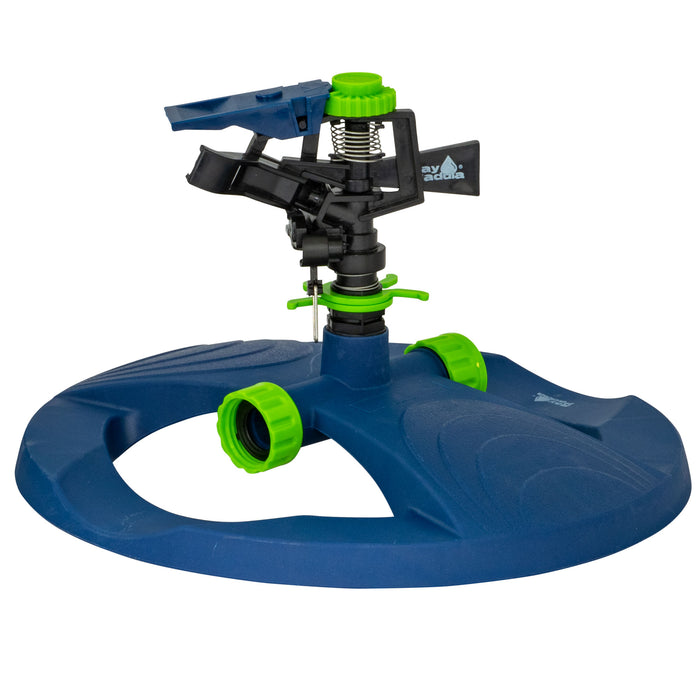
Credit: www.raypadula.com
When To Replace Your Sprinkler
Pulsating sprinkler problems often signal the need for replacement. Issues like inconsistent water flow or leaks are key indicators. Regular checks ensure your lawn stays healthy and well-watered.
Pulsating sprinklers are a gardener’s best friend. They keep your lawn green and lush. But like any tool, they wear out over time. Knowing when to replace your sprinkler is key. It ensures your garden stays healthy.Signs Of Irreparable Damage
Watch for signs of irreparable damage. These include constant leaks. Leaks mean water waste. A sprinkler that won’t rotate is another sign. Stuck sprinklers don’t cover your lawn evenly. Corrosion or rust is also bad news. It weakens your sprinkler. Plastic parts can crack. Cracks lead to poor performance. If you see any of these signs, it’s time for a change.Choosing A New Pulsating Sprinkler
Select a new pulsating sprinkler wisely. Look for durable materials. Metal sprinklers last longer. Check the spray coverage. You want even water distribution. Adjustable settings are a plus. They let you control water flow. Read reviews. Other gardeners’ experiences help. Choose a brand with a good reputation. A quality sprinkler saves money over time. Replacing your old sprinkler with a new one ensures your garden thrives. Happy gardening! “`Frequently Asked Questions
Why Is My Pulsating Sprinkler Not Rotating?
Check for debris blocking the sprinkler head. Clean the nozzle and filter screen. Ensure water pressure is adequate.
How Do I Adjust The Spray Pattern On A Pulsating Sprinkler?
Locate the adjustment dial. Turn it to change the spray distance and angle. Test and readjust as needed.
What Causes Uneven Water Distribution In Pulsating Sprinklers?
Clogged nozzles, low water pressure, or misaligned heads. Clean and check components. Adjust the water pressure.
How Often Should I Clean My Pulsating Sprinkler?
Clean the sprinkler every few weeks. Remove debris from the nozzle and filter screen to ensure proper function.
Can Low Water Pressure Affect Pulsating Sprinkler Performance?
Yes, low water pressure can reduce rotation and coverage. Check and adjust your water pressure to the recommended level.
Conclusion
Fixing pulsating sprinklers can seem challenging, but it’s manageable. Follow the steps shared. Regular maintenance ensures they work efficiently. Check for clogs and leaks often. Adjust the water pressure if needed. Replace any worn-out parts promptly. Your lawn will thank you with lush, green grass.
Keep your sprinklers in top shape, and enjoy a beautiful garden. Troubleshooting issues early saves time and effort. Happy gardening!

